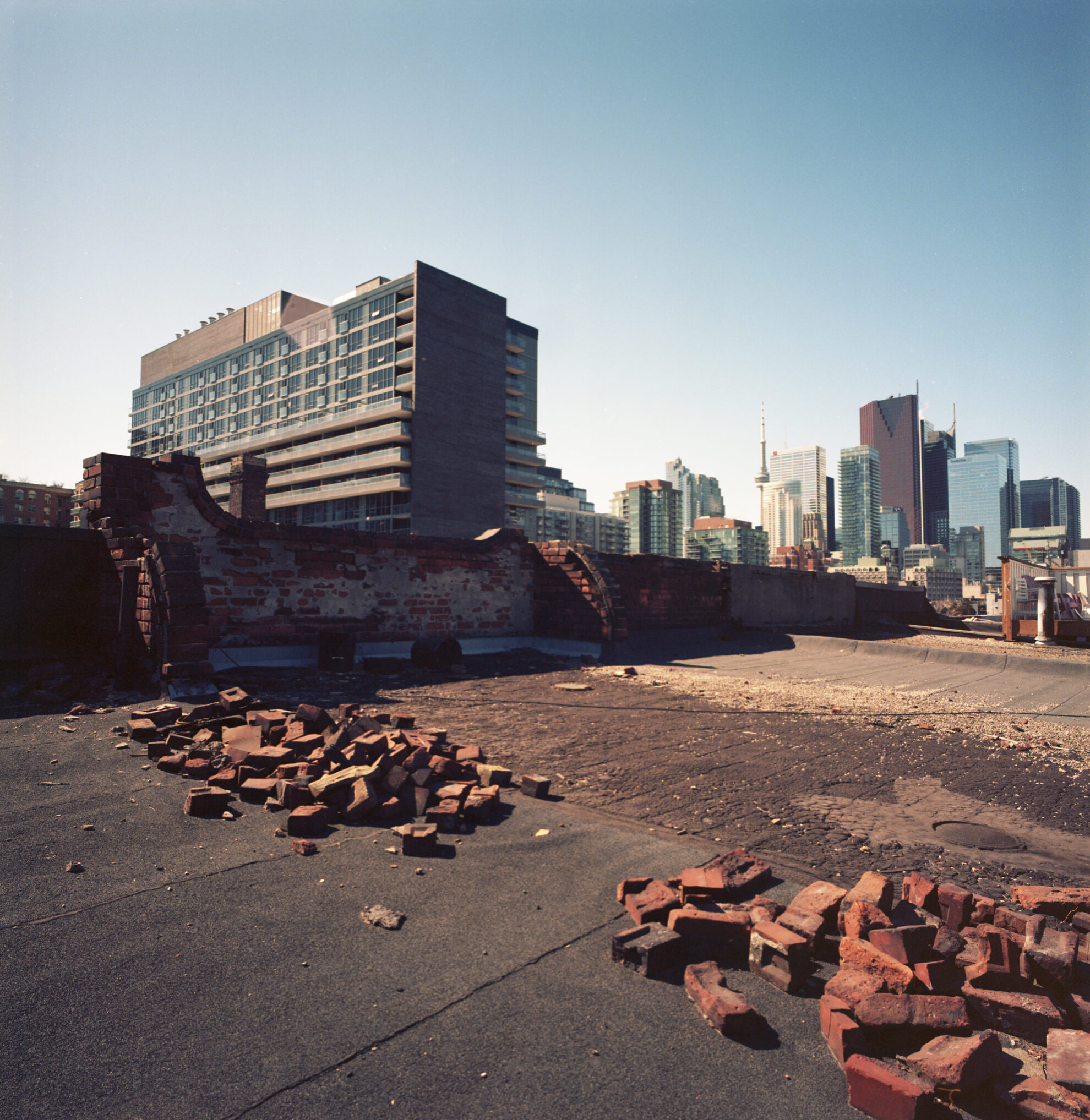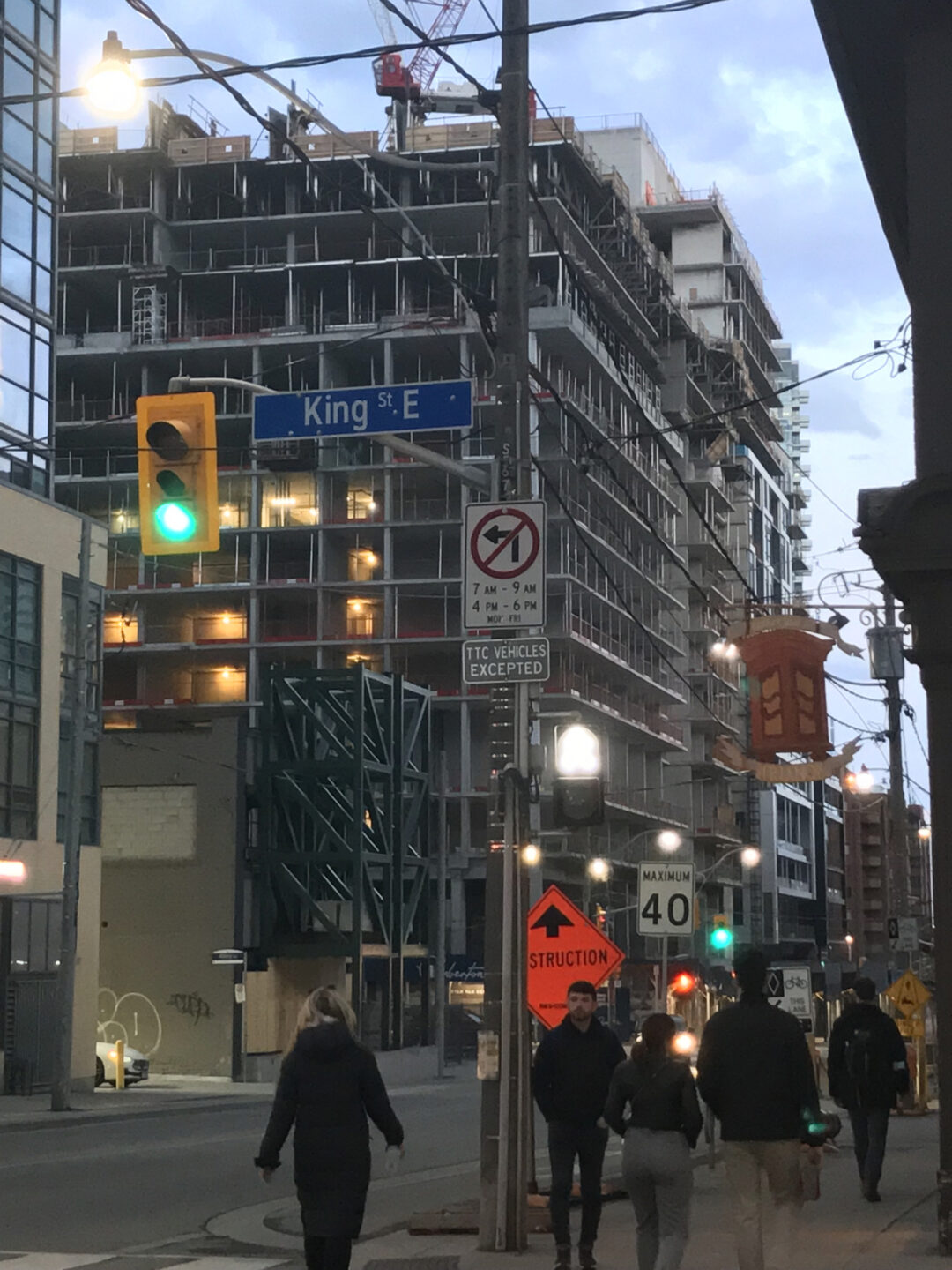By Andre Bermon –
Part 1 of 2 in a series on social change in the Moss Park neighbourhood.
Last month the Moss Park community watched in shock as Metrolinx cut down dozens of trees to prepare for construction of the Ontario Line subway. Despite a year of on-and-off discussions, meetings and consultations among community groups, their elected officials and the provincial transit agency, no solution to save the trees was reached. Residents came to realize that Metrolinx had an unnegotiable vision for their neighbourhood.
The immediate takeaway was clear. The historically marginalized Moss Park community lacked the political clout to change minds at Metrolinx. By contrast, the Law Society of Ontario and the Haudenosaunee Development Institute, a heritage advocacy arm of the Haudenosaunee Confederacy, obtained two court injunctions to temporarily halt Metrolinx’s complete destruction of a smaller number of trees, albeit 200-year-old ones, at Osgoode Hall.
Although the injunctions did not hold, the disputes have put a spotlight on communities affected by the Ontario Line. This is fortunate for Moss Park, despite the devasting loss of its trees. With nearly two decades of intense gentrification on its periphery, the wider community desperately needs a long-term vision to complement the inevitable construction of the Ontario Line.
This makes creating a social development plan, developed jointly by the community and the city, a rising priority for Moss Park. Such a neighbourhood action plan would list tangible ways to develop a healthy and vibrant community. It could be the road map for a much larger, long-term vision for redevelopment on a scale like that in Regent Park.
How did the neighbourhood get to where it is today?
A little history
Moss Park, between Jarvis and Parliament Streets, from Queen Street East to Gerrard Street, was part of a growing 19th-century Toronto. Early on it was shaped by economic forces that changed a rural suburb of the town of York into a booming Toronto commercial district by the 1880s. Around this time Moss Park began to grow as an industrial centre, with wealthier residents increasingly giving way to a working-class population in the early 20th century.
Economic challenges after the First World War and the tumultuous decade of the Great Depression had major social impacts. Moss Park endured a dramatic decline as mass unemployment and homelessness led to an increased renter population and overcrowded homes. City authorities began to wonder if major government intervention could reverse the perception of Moss Park as an urban slum.
The ideological foundation for Moss Park’s transformation in the 1950s and 1960s can be traced to the 1934 report on residential conditions by Ontario’s Lieutenant-Governor, Dr. Herbert A. Bruce. The Bruce Report depicted the dilapidated dwellings in Moss Park and other inner-city neighbourhoods as urban blight. Ignoring the practical option of rehabilitation, Bruce and his supporters recommended clearing these areas and replacing them with green space and community amenities.
This appeal for beautification instigated a complex set of reforms concerning how and where to build low-income housing. At the same time, municipal planning was shifting to a more centralized model. By the 1940s, schemes to reshape working-class neighbourhoods became known as “planned reconstruction.” To make the policy palatable to politicians and the voting public, it simply became “urban renewal.”
In 1956 a report called “Urban Renewal: A Study of the City of Toronto” recommended legislative and financial policies to combat what were considered zones of “prevailing blight.” Areas specifically targeted included Moss Park and its environs.
Baffling to readers today, the report never attempted to define ‘urban renewal.’ Instead, the authors considered it “more important to examine and illustrate the forms of action that might be necessary, and where and when they might be carried out in any area, [than] to define the term precisely.” In other words, neighbourhoods became guinea pigs to modernist planning experiments espousing wide-scale clearance and redevelopment to improve social cohesion.
Apparent in the process of artificially replacing uprooted communities was its selective nature. Moss Park lost not only a substantial number of commercial properties, handicapping the local economy, but, fundamentally, its family orientation with the arrival of a large but narrow demographic of single, low-income people. The implications of ghettoizing the disadvantaged here are painfully clear even decades later.
Missing the forest for the trees
Equipped with a historical perspective, architects of a social development plan must also navigate an intense political landscape concerning poverty. Community partners must transcend political tropes and commit to a long-term vision of dismantling the ghettoizing urban renewal model. This requires looking at the Moss Park/Sherbourne Corridor, from Queen East to Gerrard, with a holistic lens. The prevailing social ills – homelessness, drug abuse, poor mental health etc. – should not be analyzed individually, or site by site, such as at the intersection of Dundas and Sherbourne. Rather, the wider housing/social support model in Moss Park should be seen as contributing to the perpetuation of these ills.
Let’s face it: the persistent socio-economic problems facing Moss Park, despite redress efforts by both the municipal government and community advocates, have largely gone unabated. The most recent attempt to tackle homelessness in the neighbourhood was anti-poverty groups’ campaign to get the city to expropriate 214-230 Sherbourne Street, an empty lot adjacent to an abandoned Victorian-era heritage building. Pressured to obtain the site for supportive housing, Council submitted a bid to the owner (rather than expropriate the lot), but ultimately came up short. The site was sold to KingSett Capital, a private equity real estate firm, which has applied to rezone the site to accommodate a 47-storey condominium.
The “expropriation affair” highlights a persistent obstacle to the rehabilitation of Moss Park: the lack of understanding and/or refusal to tackle issues of Moss Park holistically. Overcoming this hurdle is fundamental to achieving a remedy.
The city is by far the biggest asset owner in the Moss Park area. It operates several public amenities such as the John Innes Community Recreation Centre (currently planned to be redeveloped), a large public park and a skating rink, and owns about a dozen Toronto Community Housing buildings ranging from single residential dwellings to a large high-rise (the Moss Park Apartment complex).
All these assets were created and/or obtained between the 1950s–70s and can be leveraged in a redevelopment scheme, perhaps akin to Regent Park, or something different based on community needs. A social development plan that recognizes the collective scope and potential of these assets could help set the framework for improvement.
In contrast, half-hearted efforts to obtain property for housing by outbidding real estate investors, such as the city made on Sherbourne Street, will never garner long-term results that resuscitate the Dundas-Sherbourne and wider Moss Park areas. The status quo must be broken.
Part 2 of this column, coming in the bridge’s April edition, will focus on practical first steps towards a social development plan for Moss Park.





1 Comment
Asking for a comprehensive government plan to solve MossPark is like asking the condemned to buy the hangman rope.The private sector and Mr Ford with their chequebook offers us the only salvation after 3 terms of John Tory led incompetence.